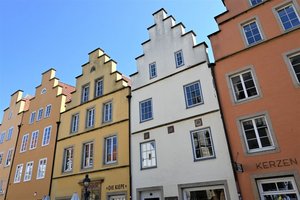






Its name derives from a legend according to which Charlemagne performed a divine miracle on the stones. Charlemagne split one of the massive capstones with a whip after the pagan Saxon prince Widukind demanded a divine sign. The reputation of the megalithic tomb is borne by its excellent state of preservation and monumental effect, which is enhanced by its location on a steep slope in a deciduous forest. Since the 17th century at the latest, the Karlsteine have been a popular motif in literature and fine art.
Unlike all other sites in the Weser-Ems region, the Karlsteine were not built from ice-age erratic blocks (gneiss or granite). Instead, the sandstone deposits on the nearby Piesberg were used. The burial chamber is not overly large at 8.5 x 3 m, but the stones used are all the more impressive. The largest capstone measures 3.70 x 2.20 x 0.80 m. Load-bearing stones and capstones are almost completely preserved. Early but poorly documented excavations revealed some finds.
Only a few metres southeast of the Large Karlsteine lie the Small Karlsteine, a disproportionately more modest and very badly destroyed burial complex. It too was made of Piesberg sandstone. The burial chamber originally had four bays.
These large stone graves are part of the Street of the Megalithic Culture (SMK).| Opening times | The megalithic tombs are accessible at all times. |
|---|
Please inquire on the homepages or directly in the respective houses about the current opening and event times, prices, cancellations, etc.. This information can change at short notice!